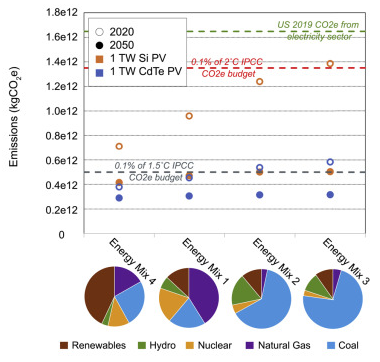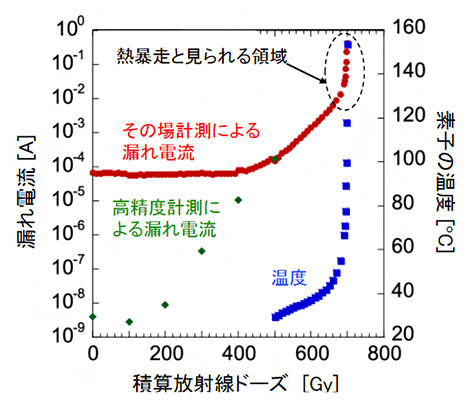2022-07-01 アメリカ国立再生可能エネルギー研究所(NREL)
これらのグリーンテクノロジーが世界の脱炭素化目標に与える全体的な影響を理解するため、チームは、PVモジュールの製造に関わるエネルギーと炭素排出量、エネルギー回収時間(PVシステムが発電に要したエネルギー量と同量のエネルギーを生み出すのに要する時間)を評価しました。
製造場所と技術の種類は、いずれも体積炭素に大きな影響を与え、脱炭素化に影響を与えています。太陽光発電を製造している国の現在のグリッドミックスを調べたところ、よりクリーンなエネルギーミックスで製造した場合、石炭を多く使用した場合と比較して、排出量を2分の1に削減できることがわかった。さらに、現在はシリコンPVが市場を支配しているが、CdTeやペロブスカイトなどの薄膜PV技術も、炭素強度をさらに2倍削減できる道筋を示している。
<関連情報>
- https://www.nrel.gov/news/program/2022/nrel-scientists-explore-how-to-make-pv-even-greener.html
- https://www.cell.com/joule/fulltext/S2542-4351(22)00253-7
テルル化カドミウムおよびシリコン太陽電池の製造に伴うエネルギーと炭素量 Embodied energy and carbon from the manufacture of cadmium telluride and silicon photovoltaics
Hope M. Wikoff,Samantha B. Reese,Matthew O. Reese
Joule Published:June 30, 2022
DOI:https://doi.org/10.1016/j.joule.2022.06.006

Highlights
- Present embodied energy, embodied carbon, and energy payback times of CdTe and Si PV
- Examine the drivers for embodied energy/carbon for state-of-the-art Si and CdTe PV
- Contextualize the cost of decarbonizing with Si versus CdTe PV and remaining carbon budget
- Manufacturing location and thin-film PV can markedly reduce the carbon intensity of PV
Summary
Looking beyond the traditional cost and efficiency metrics of photovoltaics (PV), this work evaluates the impact of embodied energy, embodied carbon, and energy payback time of two dominant technologies (CdTe and Si) on global decarbonization goals. The relative effects of PV technology type, technological advances, energy grid mix, and recycling are evaluated in terms of fostering decarbonization goals. If the highest carbon-intensity scenarios are realized, 2%–14% of the remaining estimated global carbon budget might be consumed to manufacture modules without including their balance of systems. Applying a carbon cost indicates that CdTe might have an additional value of $0.02–$0.04/W relative to Si PV manufactured with the same energy mix. Due to the scale of the challenge, any actions leading to an increased deployment of thin-film PV and/or a significant decrease in the deployed PV’s embodied carbon through changing the manufacturing grid mix have demonstrable value in helping the world stay within its remaining estimated carbon budget.



